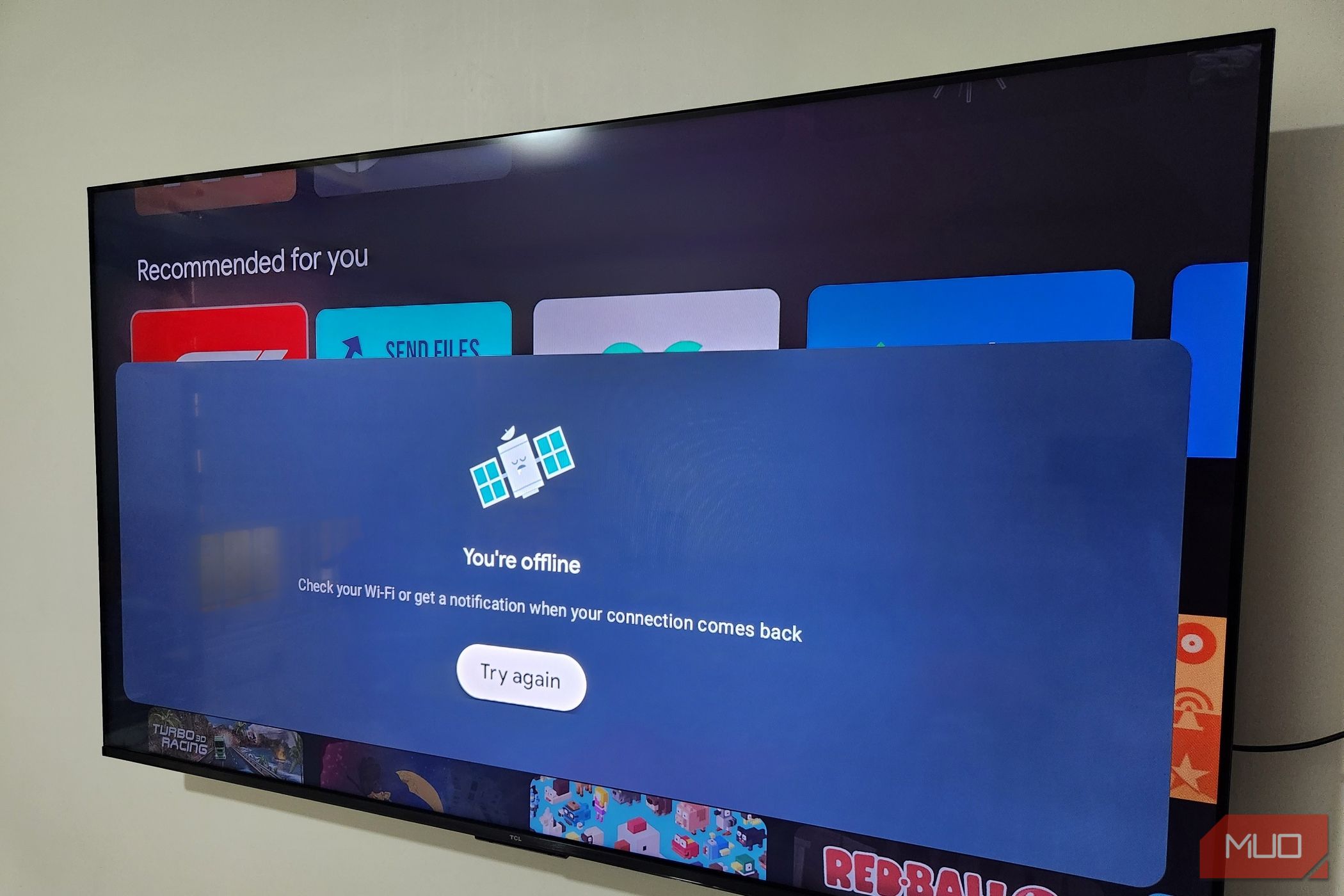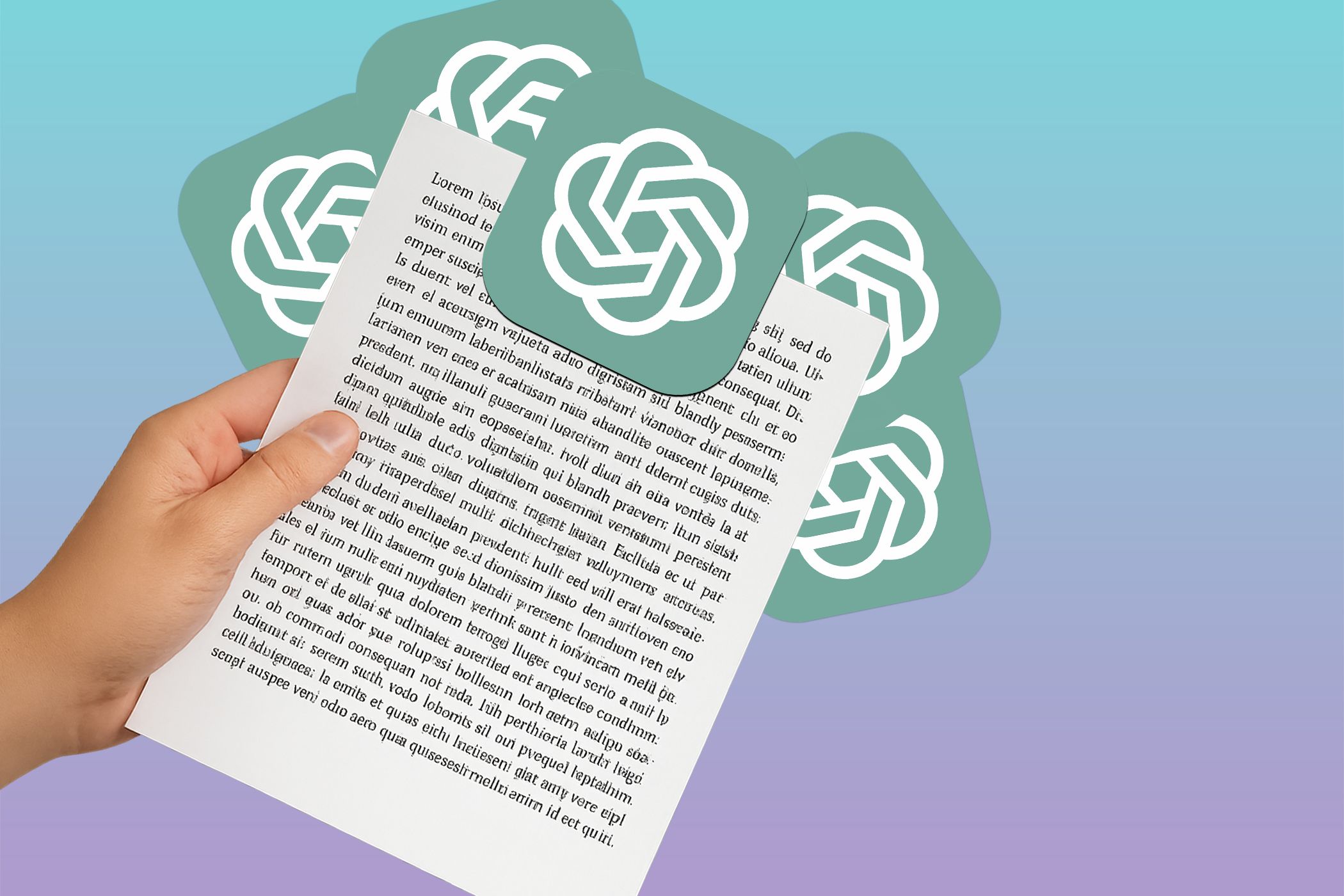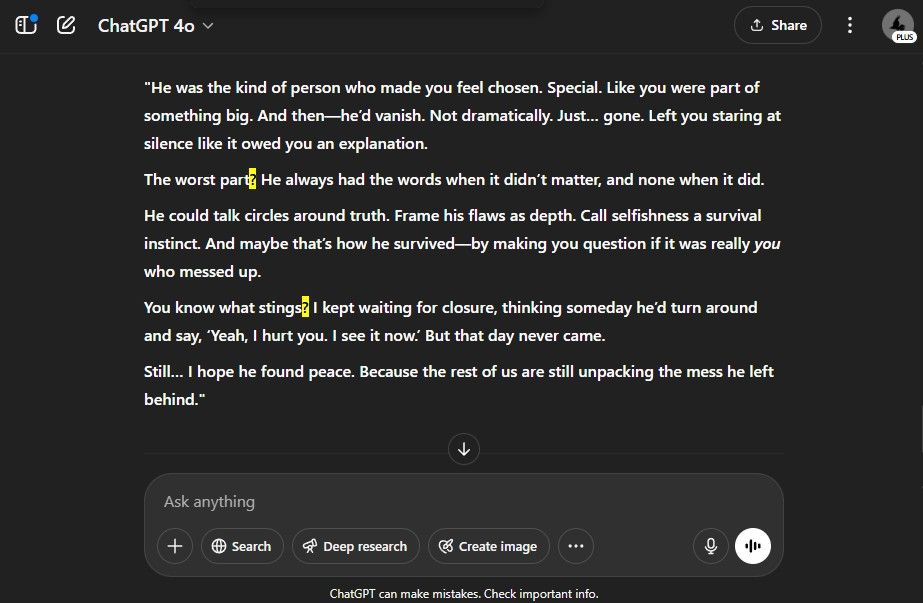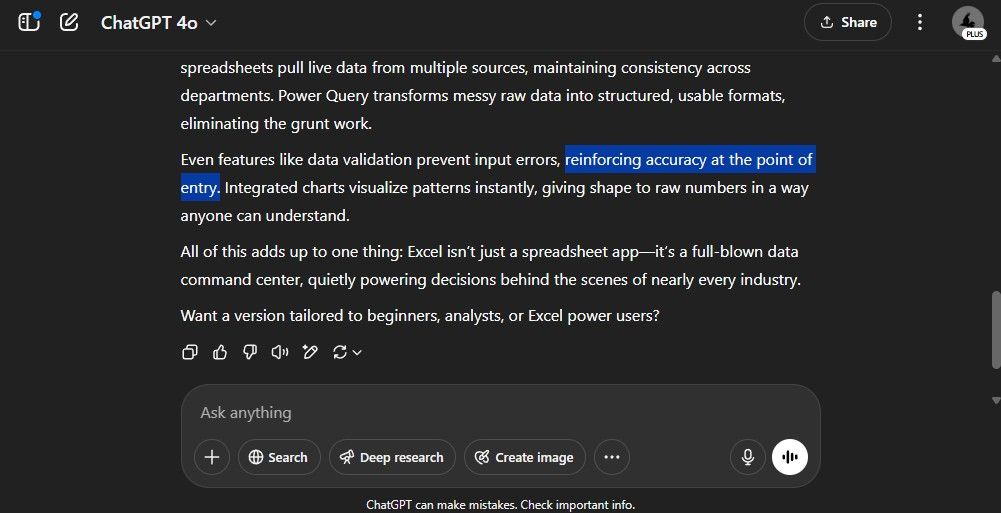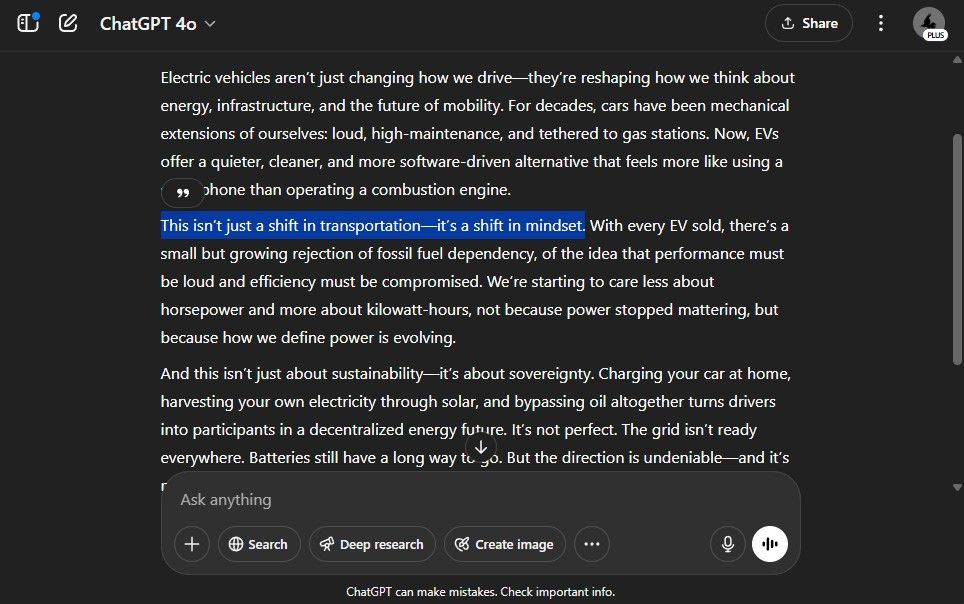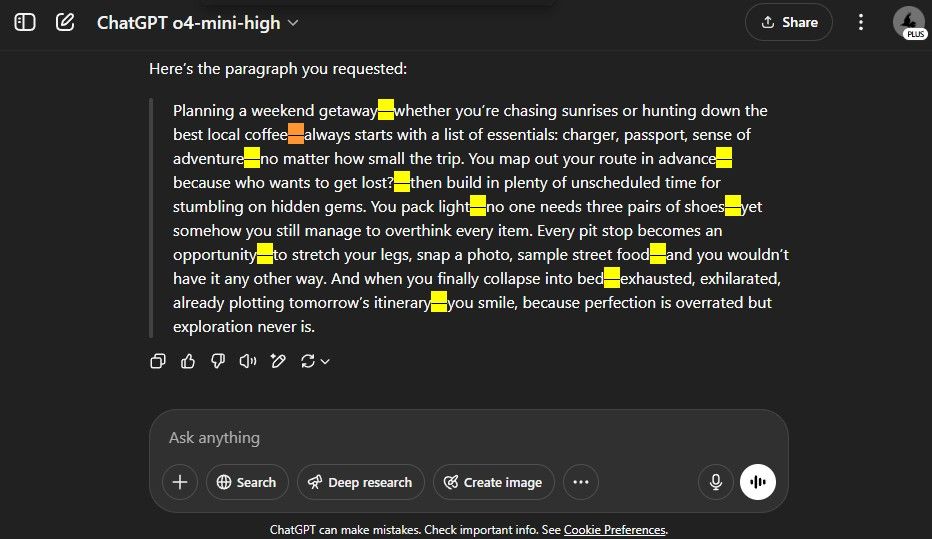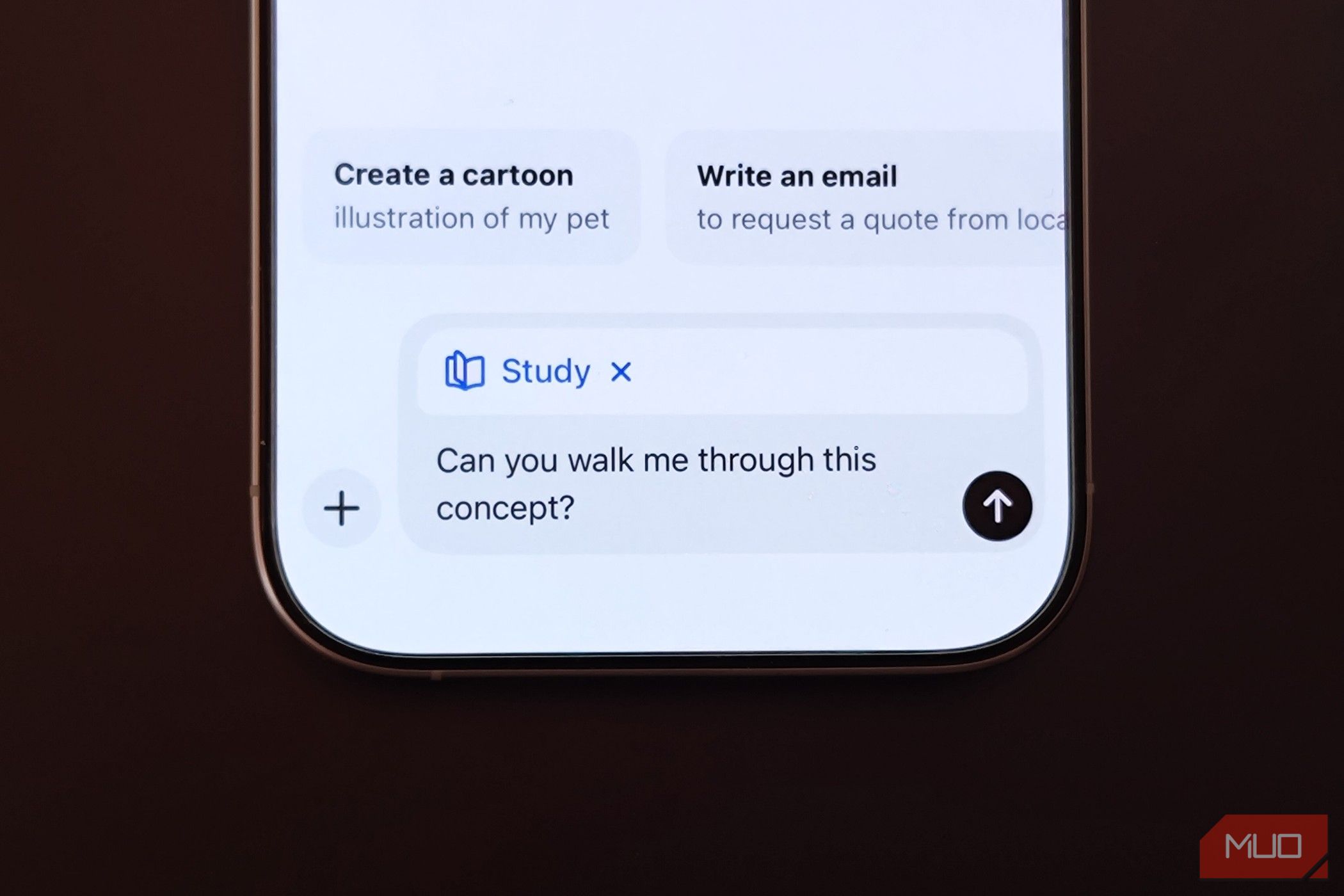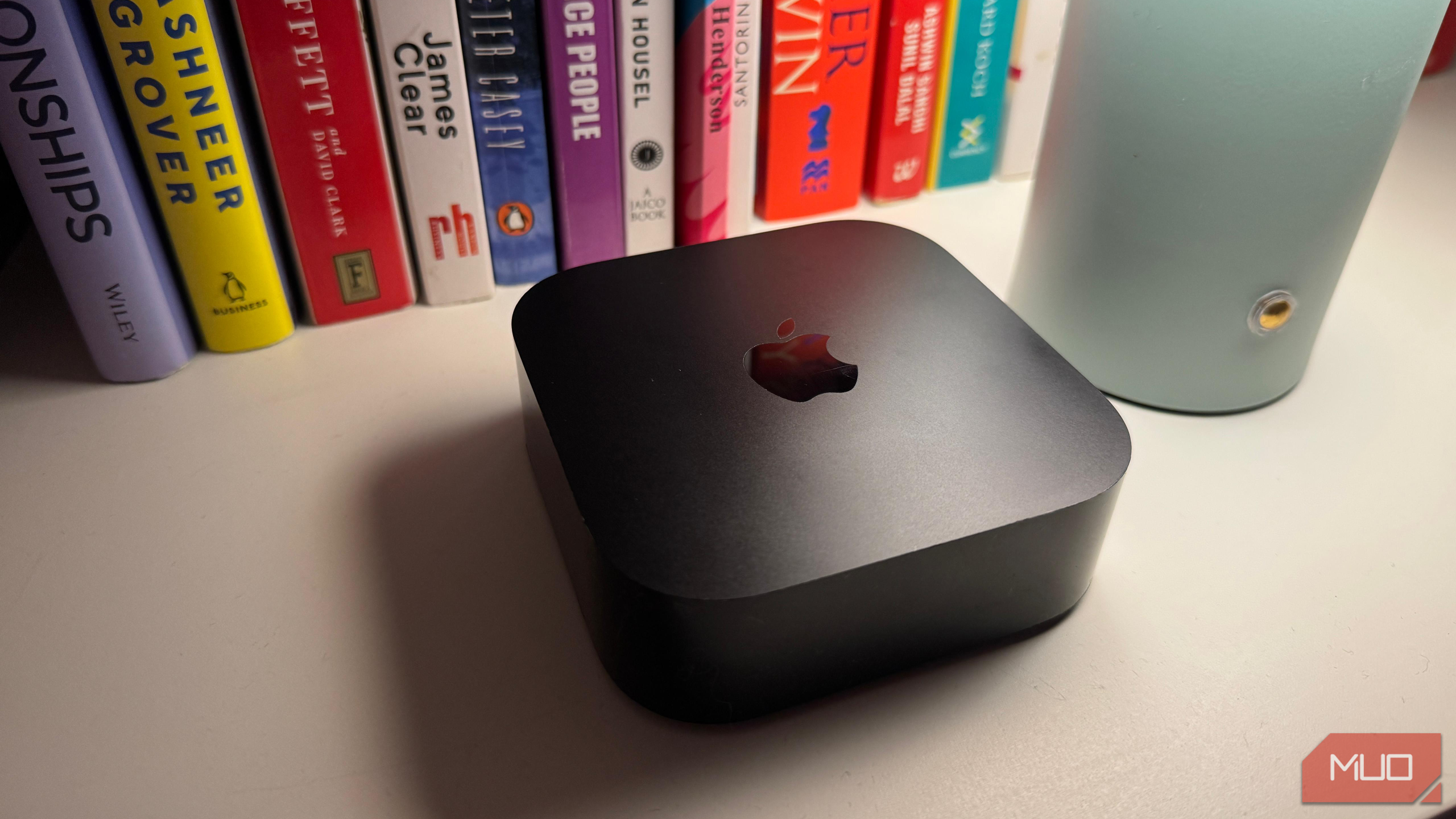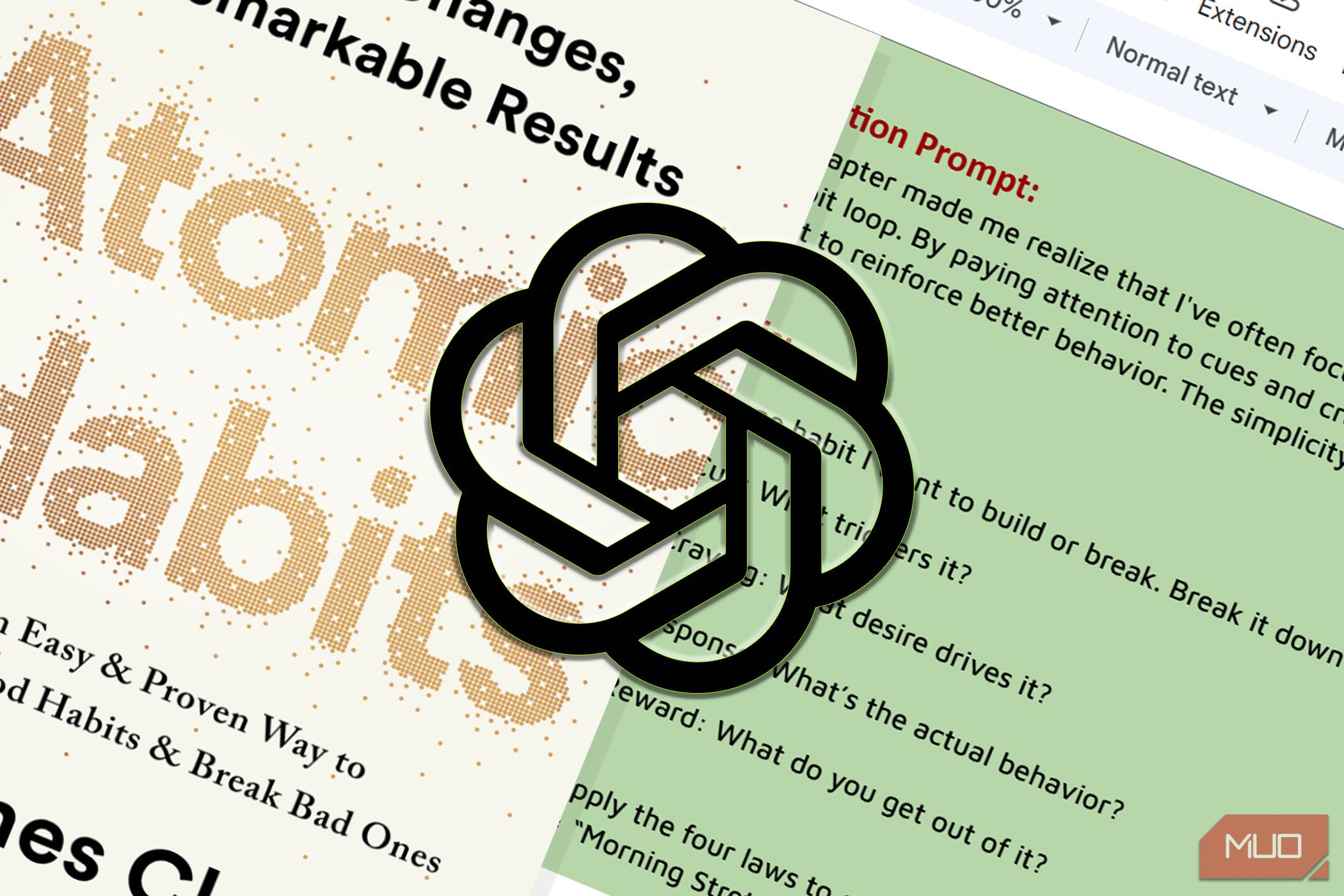ChatGPT, our beloved AI assistant. It’s gotten so good that, to the untrained eye, it’s almost impossible to tell whether a piece of writing came from a person or a machine. However, as polished as it seems on the surface, ChatGPT and other LLMs still leave fingerprints.
5
Buzzwords
Some words start out sounding smart, but the moment they start showing up in every paragraph, they lose meaning. There’s a specific flavor of language that just screams it was written by AI. Not because the words are wrong, but because no actual human talks like this unless they’re trying to land a marketing job. Words like treasure trove, game-changer, maximize, enhance, streamline, robust, seamless, elevate, delve, embark, and of course, anything happening in a realm.
You’ll notice these pop up all the time in AI writing. And it’s not surprising: ChatGPT was trained on the internet, and the internet is absolutely coated in copywritten content.
So now, when you read something like “Let’s delve into the intricacies of this seamless solution that will elevate your workflow,” it doesn’t sound professional anymore; it sounds AI. An article that constantly talks about “delving into the intricacies of” something or treating every solution as a “game-changer” shows that it was heavily influenced by AI. ChatGPT even jokes about this on X:
4
Rhetorical Fragments
Rhetorical devices are fine. They’re meant to spark curiosity, create contrast, or give the reader a half-second of suspense before the punchline. But like anything else, they only work when you actually have a punchline and don’t use them every five lines.
I’m not a big fan of rhetorical fragments myself, but AI seems to love them. Look at the examples below:
“And what’s even worse? It’s making people lazy.”
“The problem? Microsoft doesn’t do what it’s supposed to.”
“The other thing? The whole compatibility mess.”
“And another thing? AI is starting to sound more and more like everything else on the internet.”
These are real outputs from ChatGPT. You’ll notice the structure is always the same. A quick fix is to turn them into full clauses by swapping the question mark for “is” or “is that.” This way, you have a sentence that carries actual meaning without burdening the reader.
- What’s even worse is that it’s making people lazy.
- The problem is that Microsoft doesn’t do what it’s supposed to.
- The other thing is the whole compatibility mess.
- Another thing is that AI is starting to sound more and more like everything else on the internet.
3
Participial Add-Ons
Here’s another sentence structure that AI loves a little too much. A participal add-on is when you describe one action, add a comma, and then add a second phrase that explains the result or effect.
While it isn’t technically wrong, it rarely reads well. You’ll recognize it instantly once you start looking. Others have recognized it long before, as this sentence structure is one of the main reasons why AI checkers might flag your writing. Examples straight from ChatGPT when I asked it about Excel:
“The chart wizard generates trend lines, illustrating growth trajectories over time.”
“The filter tool narrows down records, focusing on priority transactions in seconds.”
“VBA macros automate repetitive tasks, boosting efficiency across large datasets.”
“The pivot table groups entries by category, revealing spending patterns at a glance.”
In most of these, the second part doesn’t add anything that couldn’t just be written more clearly with _and_. Essentially, the AI is forcing two ideas together instead of letting each stand on its own or flow naturally with a clear connector.
These sentences can be sharpened by choosing a stronger main verb, splitting the thought into two sentences, or simply swapping that comma-and-gerund for “and.” Take the filter tool example:
|
Original |
Better |
|---|---|
|
The filter tool narrows down records, focusing on priority transactions in seconds. |
The filter tool narrows down records and highlights priority transactions in seconds. |

Related
4 AI-Checking ChatGPT Detector Tools for Teachers, Lecturers, and Bosses
Figure out who’s using ChatGPT to create their work for them with these handy tools.
2
Contrastive Redefinitions
Here’s another writing move that should feel powerful but gets absolutely mangled by AI. Writers often use a two-part construction to heighten drama: first they dismiss something as ordinary, then they declare it to be extraordinary.
The general structure is “This isn’t just X. It’s Y.” Used sparingly, it works. But ChatGPT doesn’t know what “sparingly” means.
Some examples from one ChatGPT session:
“This isn’t linear evolution—it’s rhizomatic.”
“Adriana isn’t the sum of her origins—she’s something _new_, forged in contradiction.”
“The mix isn’t dilution. It’s transmutation.”
“This isn’t just a career path—it’s a metamorphic trajectory.”
“Your path isn’t just logistical. It’s ontological.”
“Backing up your Gmail data isn’t just smart—it’s essential.”
Six of these are from the same ChatGPT thread! It’s a shame, because the structure itself is solid. I use it all the time in my own writing, especially when I’m going for a more reflective tone. However, the point of this construction is to create tension and resolution. When everything gets redefined into something more poetic or “deeper,” it loses meaning.
When you see writing that keeps insisting “this isn’t just one thing—it’s actually a cosmic, soul-redefining, metaphysical breakthrough,” pause and ask: does it actually feel like one? If it doesn’t, then it was likely written by AI.
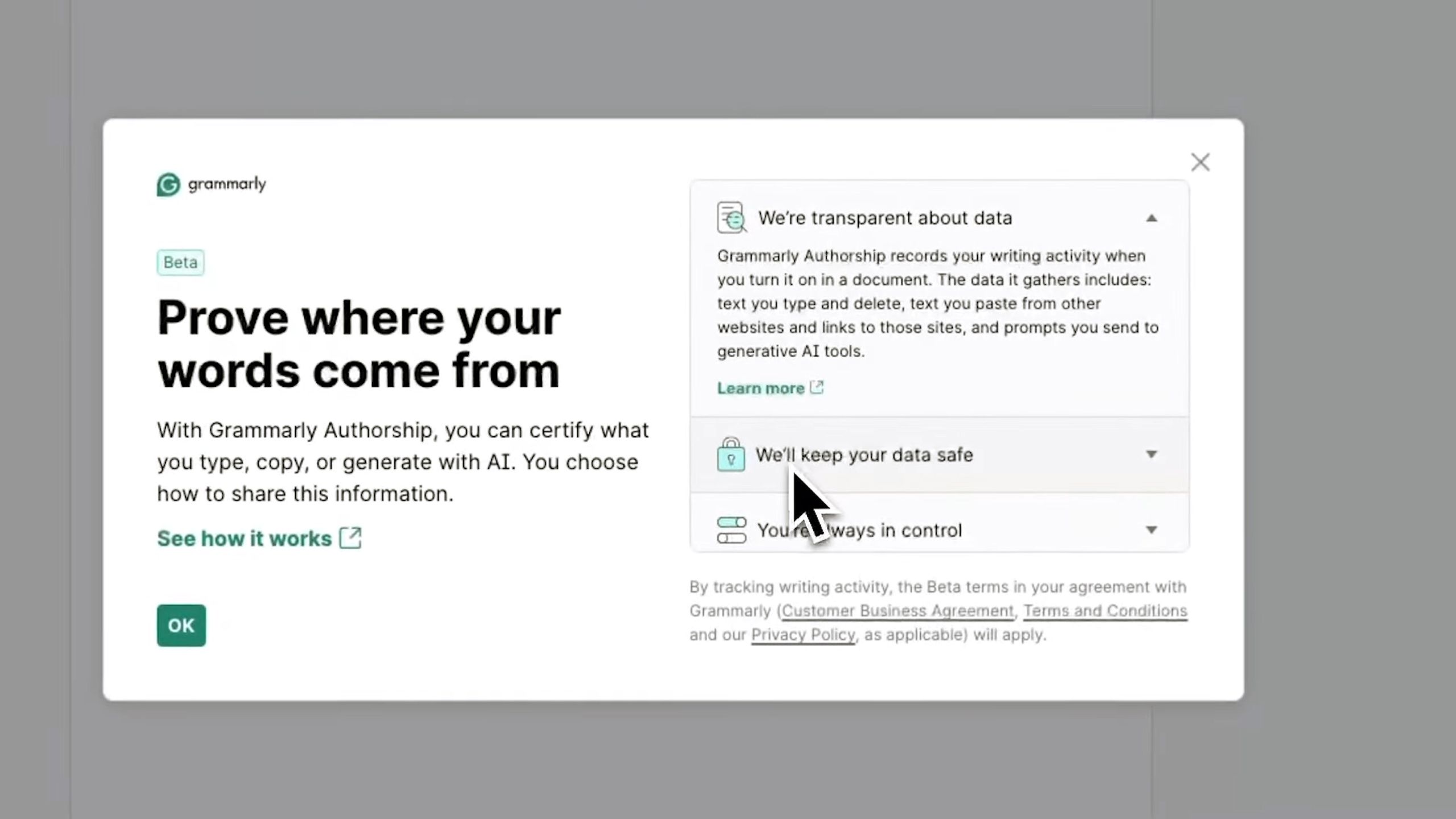
Related
This AI App Will Help You Prove You Didn’t Use AI to Write Your Paper
This app will help prove that you didn’t cheat.
1
Em Dash Splices
Em dashes are great. I love them. I only started using them a couple of years ago and immediately got hooked. They’re flexible, stylish, and can make a sentence feel dynamic. But ChatGPT really goes wild with them. Ask it to write something as simple as a blog post about planning a weekend trip, and suddenly every third sentence is tripping over em dashes:
Look at that! It’s not just that there are too many dashes; it’s that most of them don’t even make sense. Every pause, every shift, every parenthetical thought got its own dash. It might read exciting in the first few lines, but very quickly it becomes dizzying. Many of those breaks would work better as commas, and a few could stand alone as their own sentences.
The power of the em dash is in its scarcity, and when overused, it’s meaningless. So, when you get a piece of writing riddled with dashes from someone who never uses them, you can bet they didn’t write it. ChatGPT did.
Of course, all of these stylistic quirks exist in human writing, too. None of them on their own proves that a text was generated by AI. But when you spot them used oddly, in excess, or several of these red flags crop up together, that’s your cue to raise an eyebrow.



